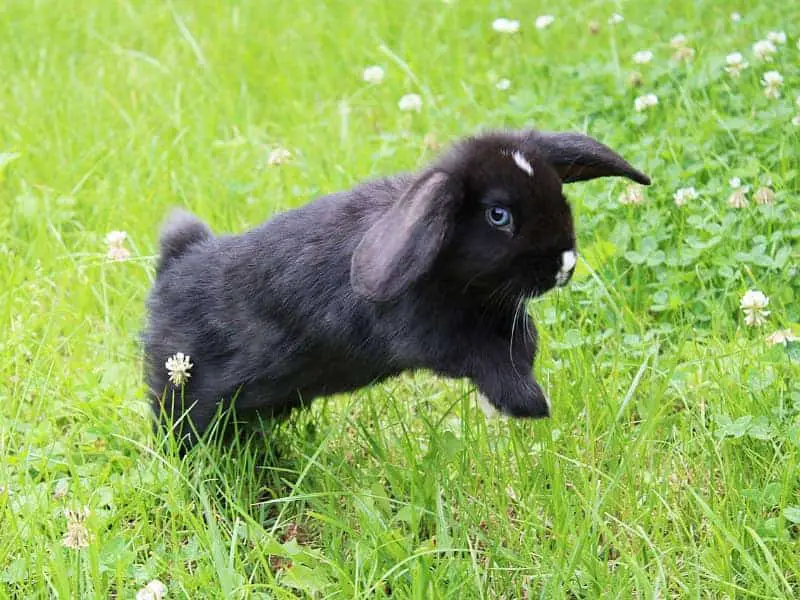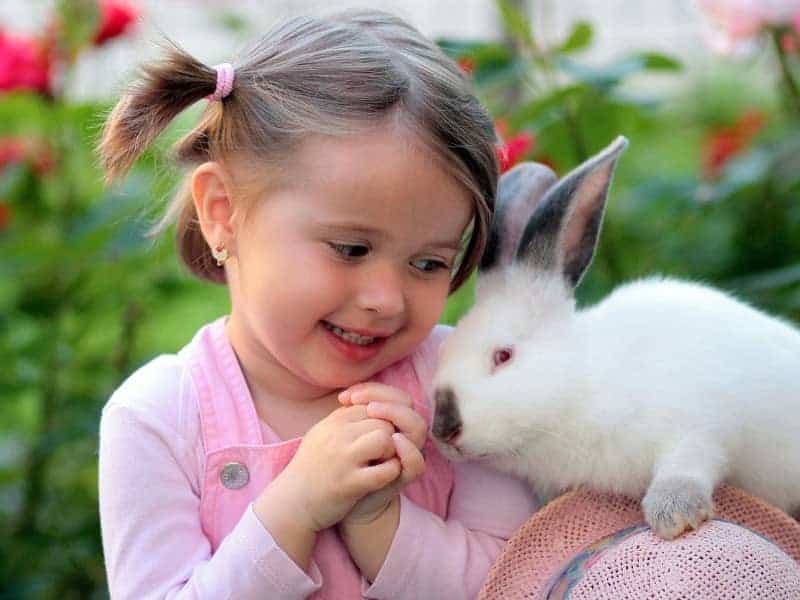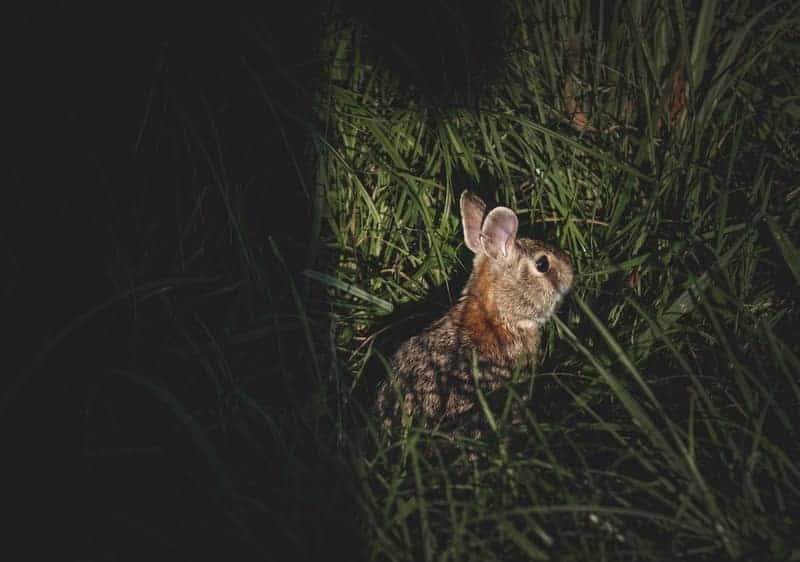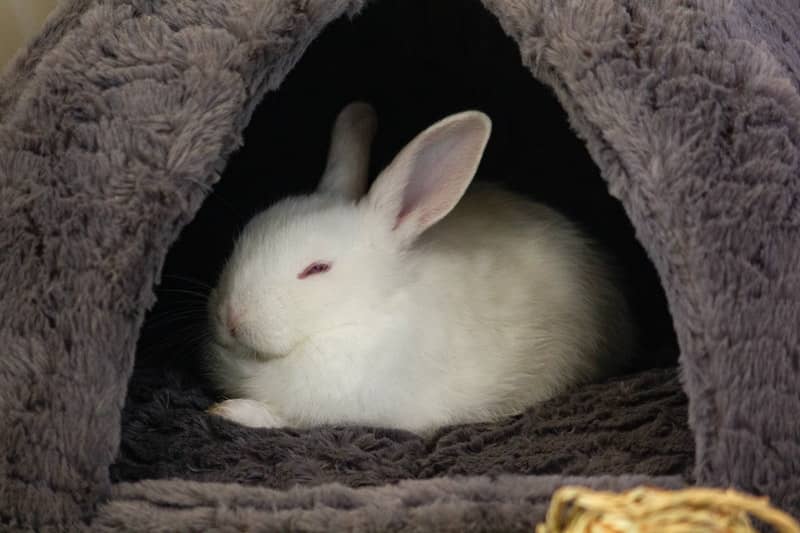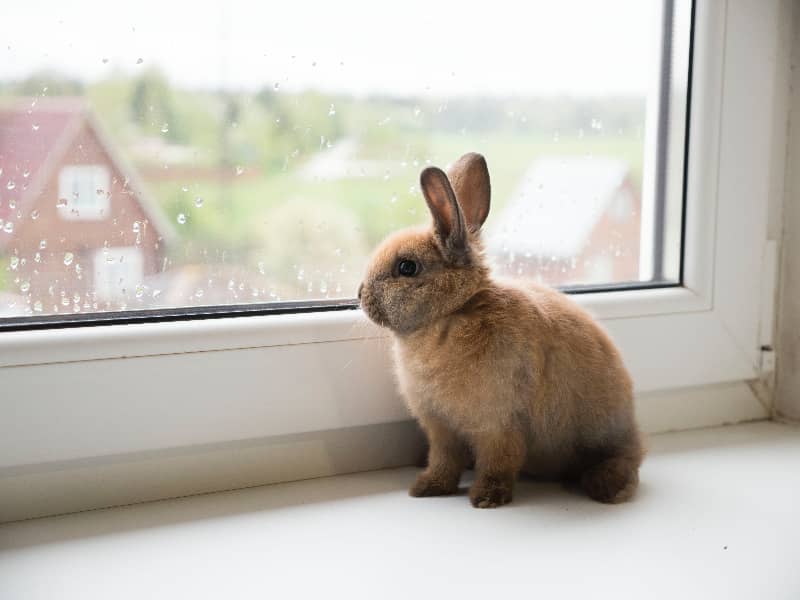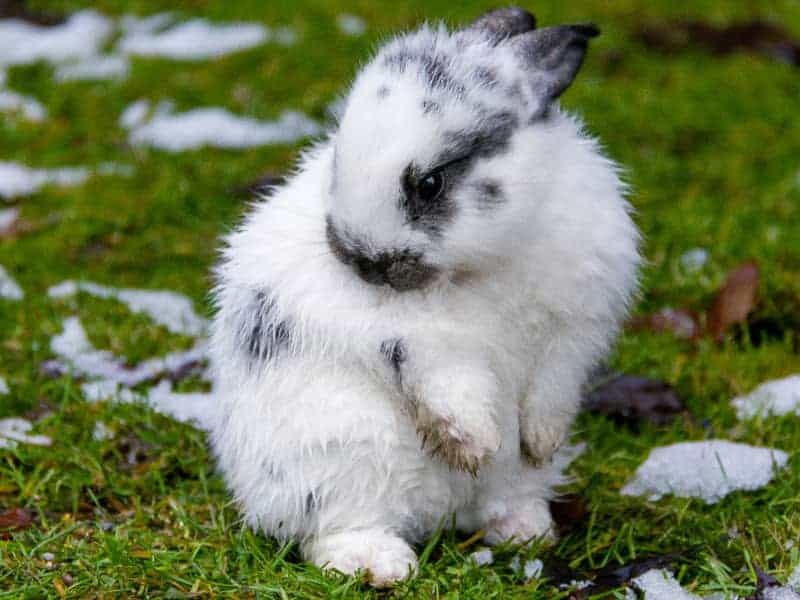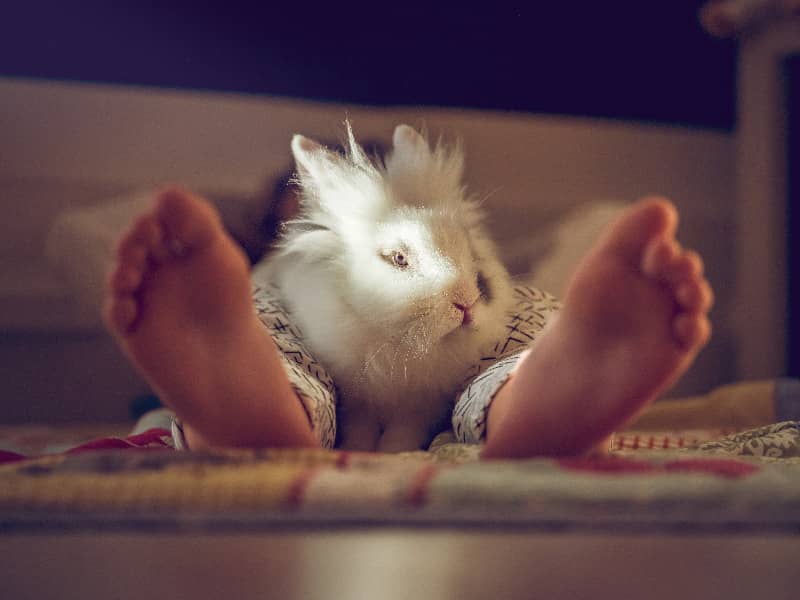
Rabbit claw torn off, what to do?
You may have already experienced it or at least heard about it: Your rabbit has torn off its claw and you don't know what to do. In this moment, panic rises and uncertainty spreads. But don't worry, this blogpost is here to help you in such situations.
- Rabbit claw torn off, what to do?
- What is the problem of a torn off rabbit claw?
- Anatomy of the rabbit claw
- Causes of torn off rabbit claws
- Rabbit claw torn off - first aid measures
- When is a visit to the vet necessary?
- Diagnosis by the veterinarian
- Rabbit claw torn off - Medical treatment
- Rabbit claw torn off - Home care
- Long-term effects
- Preventive measures
- Frequently asked questions about rabbit claw
- Tips for the visit to the vet
- Conclusion: rabbit claw torn off, what to do?
What is the problem of a torn off rabbit claw?
A torn claw on a rabbit is not only painful for the animal, but can also lead to other health problems. Infection and blood loss are just some of the risks that can accompany such an injury.
Why is it important?
The claws are important for rabbits not only for digging or climbing, but also for general mobility. A torn claw can restrict the animal's freedom of movement and lead to a reduced quality of life. Therefore, it is important to act quickly and correctly.
What is covered in this blog post?
In this blog post, we'll cover all the aspects you need to know if your rabbit has torn off its claw. From first aid to long-term care, you'll find all the information you need to help your little friend.
Anatomy of the rabbit claw
Before we move on to specific actions, it is helpful to understand the anatomy of the rabbit's claw. This will give us insight into why certain problems may occur and how best to treat them.
Structure of the rabbit claw
The claw of a rabbit consists of several layers. The outer layer is hard and protects the softer interior where the blood vessels and nerves are located. This inner part is often called the "quick" or "live" part of the claw. When the claw is torn off, it is often these delicate areas that are injured.
Function of the claw
Claws are necessary for rabbits. They use them for digging, climbing and defense. The claws also provide stability and help the rabbit navigate different terrains. Therefore, loss or injury of the claw can have a significant impact on the welfare of the animal.
Differences from other pets
Compared to dogs or cats, rabbits have more sensitive claws. They are less robust and can be injured more easily. Furthermore, rabbits have a different blood circulation in the claws, which means that an injury can become a serious problem more quickly.
Causes of torn off rabbit claws
If your rabbit has torn off its claw, you are probably wondering how this could have happened. The causes can be many and it is important to understand them to avoid future incidents.
Accidents and injuries
The most common cause of a torn claw is accidents. Perhaps your rabbit was trying to escape from a confined space or got caught while playing. A fall can also cause the claw to break or break off. In such cases, quick action is required to treat the injury.
Diseases and deficiencies
Sometimes health problems can also be the cause. Deficiencies, such as a calcium deficiency, can weaken the claws. Certain diseases that affect bone or skin health can also increase the risk of claw injuries.
Improper care
Another factor that is often overlooked is the care of the claws. If the claws get too long, they can break or get caught more easily. Improper trimming of the claws can also lead to injury. Therefore, it is important not to neglect regular claw care as a preventive measure.
Understanding the causes is the first step to effectively helping your rabbit and preventing future incidents.
Rabbit claw torn off - first aid measures
If the misfortune has happened and your rabbit has torn off its claw, fast action is required. In this section you will learn what first aid measures you can take to help your little friend.
Immediate steps
The first step is to calm the situation. Try to carefully catch your rabbit and bring it to a safe environment to avoid further injury. Then you should assess the injury. If the claw is only partially torn off, do not attempt to remove it yourself. This could make the injury worse.
Rabbit claw torn off - hemostasis
A torn claw can cause a lot of bleeding. To stop the bleeding, you can use a clean cloth or compress and apply gentle pressure to the wound. Special hemostatic powders for animals may also be helpful. If the bleeding does not stop within a few minutes, an immediate visit to the veterinarian is necessary.
Wound care
After the bleeding has stopped, you should clean the wound. Use an antiseptic solution or clear water. Avoid alcohol or hydrogen peroxide, as they can irritate the wound. You can then apply a sterile dressing to protect the wound from infection.
These are the basic first aid measures you can take if your rabbit has torn off its claw. In many cases, however, a visit to the vet is essential to ensure that the injury is treated properly.
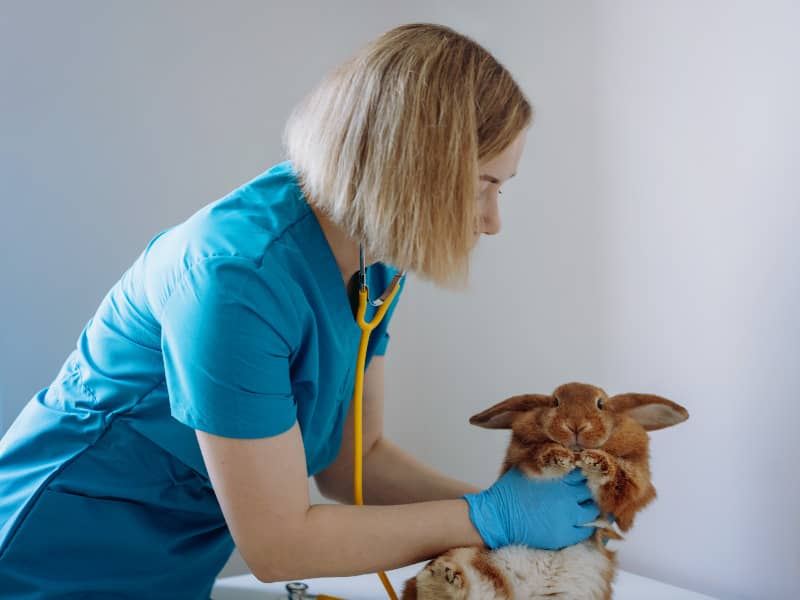
When is a visit to the vet necessary?
After you have taken the first aid measures, the question arises whether and when a visit to the vet is necessary. In this section, we will discuss the signs that indicate the need for professional help.
Symptoms of an emergency
If the bleeding does not stop, the rabbit is visibly in pain, or the wound looks infected, you should consult a veterinarian immediately. Also, if the animal seems lethargic or suddenly changes its behavior, these are signs of an emergency.
Self-treatment risks
It may be tempting to save money and stress by treating the injury yourself. But improper treatment can lead to infection, complications and, in the worst case, a worsening of your rabbit's condition. Therefore, in many cases, it is safer to consult a veterinarian.
Costs and procedure
A veterinary visit can vary depending on the severity of the injury and the treatments needed. X-rays, blood tests or even surgery may be necessary. Find out the costs in advance and ask for an estimate to avoid nasty surprises.
A visit to the vet is often unavoidable to ensure that your rabbit receives the best care. It is better to play it safe and seek professional help than to risk your pet's well-being.
Diagnosis by the veterinarian
So you've decided that a trip to the vet is the best option. What can you expect now? In this section, we will go over how the diagnosis is made at the vet's office and what tests might be performed.
Research methods
The veterinarian will first do a thorough examination of the injured area. This often includes checking your rabbit's other claws and general health. This will give the vet a comprehensive overview of the animal's condition and help with the diagnosis.
X-ray and other tests
In some cases, it may be necessary to perform further diagnostic tests. For example, an x-ray may show if the claw is completely torn off or if there are deeper injuries. Blood tests can provide information about the general state of health and give indications of possible infections.
Treatment plan
After diagnosis, the veterinarian will create a treatment plan. This can range from prescribing pain medication to surgical procedures, depending on the severity of the injury. It is important to follow the veterinarian's instructions carefully to ensure a quick and complete recovery for your rabbit.
Diagnosis by a veterinarian is a crucial step in ensuring the best possible treatment for your rabbit. With a professional assessment, you can be sure that you are doing everything in your power to help your little friend.
Rabbit claw torn off - Medical treatment
After the veterinarian has made a diagnosis, medical treatment will follow. This can vary depending on the severity of the injury and the overall health of your rabbit. In this section, we will go over the different treatment options.
Medication
Pain medications are often the first step in treatment. These help to relieve your rabbit's pain and promote the healing process. Antibiotics may also be prescribed to minimize the risk of infection. It is important to administer the medications exactly as directed by the veterinarian.
Surgical interventions
In more severe cases, surgical intervention may be necessary. This could be the case if the claw is completely torn off or if there are deeper injuries. The veterinarian will choose the best method to treat the claw and avoid further complications.
Aftercare
After medical treatment, careful follow-up care is required. This may include regular dressing changes, further administration of medications, and follow-up visits to the veterinarian. Follow-up care is critical for a quick and complete recovery of your rabbit.
Medical treatment is an important part of your rabbit's recovery. By following the treatment plan and careful follow-up, you can help your little friend get back on his feet quickly.
Rabbit claw torn off - Home care
After the vet visit and medical treatment, home care is a crucial factor in your rabbit's recovery. Here you will learn how to give your rabbit the best care at home.
Dressing change
If a dressing has been applied, it is important to change it regularly. A dirty or wet dressing can increase the risk of infection. Be sure to follow the veterinarian's instructions for dressing changes carefully and always use sterile materials.
Drug administration
If medication has been prescribed, it is critical to administer it exactly as directed by the veterinarian. Skipping a dose or discontinuing medication prematurely can interfere with the healing process and lead to complications.
Observe behavior of the rabbit
Observing your rabbit's behavior can provide valuable clues to its state of recovery. Look for signs of discomfort, such as decreased activity, loss of appetite, or unusual behavior. If there are signs of complications, you should consult a veterinarian again.
Home care is an important aspect of recovery and should not be neglected. Through careful care and observation, you can help your rabbit get well quickly.
Long-term effects
After the acute phase of the injury and immediate treatment are complete, you may wonder what long-term effects a torn claw could have on your rabbit. In this section, we will address the chances of healing, possible complications, and the rabbit's quality of life.
Healing chances, with a torn off rabbit claw
In most cases, a torn claw heals well with proper treatment and care. The claw may grow back, but this may take several weeks or even months. It is important to continue claw care during this time to prevent further injury.
Possible complications
Although the chances of healing are good, there are risks for complications. These include infection, inflammation or problems with regrowth of the claw. In rare cases, a torn claw can also lead to permanent movement problems.
Quality of life of the rabbit
With proper care and treatment, your rabbit's quality of life should not be permanently affected. However, it is important to monitor the animal regularly and consult a veterinarian again if there are signs of discomfort or pain.
The long-term effects of a torn claw can vary, but are usually manageable with proper care and attention. With continued care and regular vet visits, you can help your rabbit live a long, healthy life.
Preventive measures
After you have successfully gone through the healing process, you will certainly want to avoid future incidents. In this section, we'll discuss what preventative measures you can take to minimize the risk of another claw injury.
Claw care
One of the most effective preventative measures is regular claw care. By properly trimming the claws, you can prevent them from getting too long and getting caught or broken. There are special claw trimmers for small animals that make the process easier.
Environmental design
The design of the environment in which your rabbit lives also plays a role. Avoid sharp or pointed objects that the rabbit could injure itself on. A safe and spacious living space can also help prevent accidents and injuries.
Nutrition
A balanced diet is important not only for your rabbit's overall health, but also for the health of its claws. Calcium and other important nutrients can strengthen the claws and reduce the risk of injury.
Prevention is better than cure. By following these preventive measures, you can significantly reduce the risk of your rabbit getting a new claw injury.
Frequently asked questions about rabbit claw
After covering the various aspects of claw injury in rabbits, there are still some questions that are frequently asked. In this section we will answer them to give you a comprehensive understanding of the subject.
Can the rabbit claw grow back?
Yes, in most cases the claw can grow back. However, this may take several weeks or even months. It is important to continue claw care during this time and schedule regular vet visits to monitor the healing process.
How often should you cut the rabbit claws?
The frequency of claw trimming can vary depending on the rabbit. Some may need a trim every few weeks, while others may only need one every few months. Your veterinarian can give you a recommendation based on your rabbit's specific needs.
What to do in case of repeated incidents?
If your rabbit has repeated problems with torn claws, it is advisable to see a veterinarian for a thorough examination. There may be underlying health problems that need to be treated, or adjustments in husbandry and care may be necessary.
These frequently asked questions round out our understanding of the topic and provide additional information that may be useful in specific cases.
Tips for the visit to the vet
A vet visit can be stressful, both for you and your rabbit. In this section, we'll give you some tips on how to best prepare yourself to make the process as smooth as possible.
Preparation
Before you go to the vet, it is helpful to gather all relevant information. This includes previous medical records, a list of symptoms, and any medications or treatments you have already tried. This will give the vet a good overview and make diagnosis easier.
Questions for the vet
Be prepared to ask the veterinarian questions. This is your opportunity to learn more about your rabbit's condition and understand the treatment plan. Questions about the length of recovery, possible complications, and cost are especially important in this context.
What to take with you
In addition to medical records, it is a good idea to bring a few items for your rabbit's comfort. A small towel or blanket can provide comfort for the animal during transport and waiting in the waiting room. A few favorite snacks can also be helpful in calming your rabbit.
With the right preparation and the right questions, you can make the vet visit as comfortable as possible for you and your rabbit.
Conclusion: rabbit claw torn off, what to do?
After working through the various aspects of claw injuries in rabbits, it's time for a final conclusion. In this section, we will summarize the most important points and give you a clear guide to action in the event that your rabbit has torn off its claw.
Important points
- Quick action is critical to minimize the risks of a claw injury.
- A visit to the veterinarian is often unavoidable to ensure professional diagnosis and treatment.
- Home care and follow-up play an important role in your rabbit's recovery.
- Preventive measures such as regular claw care can prevent future injuries.
Action guide
- Take first aid measures: Stop bleeding and clean the wound.
- Consult veterinarian: For an accurate diagnosis and treatment plan.
- Medical and home care: administer medications and change dressings.
- Long-term care and prevention: Optimize claw care and nutrition.
With this information, you will be well equipped to act properly in the event of a claw injury to your rabbit. The health and well-being of your little friend is the most important thing, and with proper care and attention, you can help your rabbit live a long, happy life.
That brings us to the end of this comprehensive blog post on the topic of "Rabbit claw torn off, what to do?". I hope you find the information provided helpful and now feel better prepared to give your rabbit the best care possible.
Author

-
Garden animal - A life with nature
Welcome to my animal blog! My name is Dirk and I am happy to take you on my journey through the fascinating world of animals and gardening.
Born 54 years ago, I have had an insatiable curiosity for the animal world around me since childhood. Although I have moved professionally in other industries, my true passion has always been animals and nature. It is remarkable how a small garden has become such an important part of my life.
Many of my fondest memories are associated with the animals that share our home. Whether it's the curious squirrels that scurry across the trees in the morning, the colorful variety of birds that visit our feeders, or the busy bees and butterflies that pollinate our flowers, every moment with them is invaluable to me.
This blog is my contribution to share my experiences, discoveries and insights with like-minded people. Here I will share stories of unforgettable encounters with animals, give tips on gardening and creating wildlife-friendly habitats, and take you on my journeys through nature.
Thank you so much for being here!
Cordial,
Dirk aka garden animal
Last posts
- 27. February 2024PetsVeganes Hundefutter – Grün und Gesund?
- 18. January 2024ChickensOregano für Hühner
- November 27, 2023HamsterDiurnal hamsters
- November 24, 2023HamsterHamster hammock

